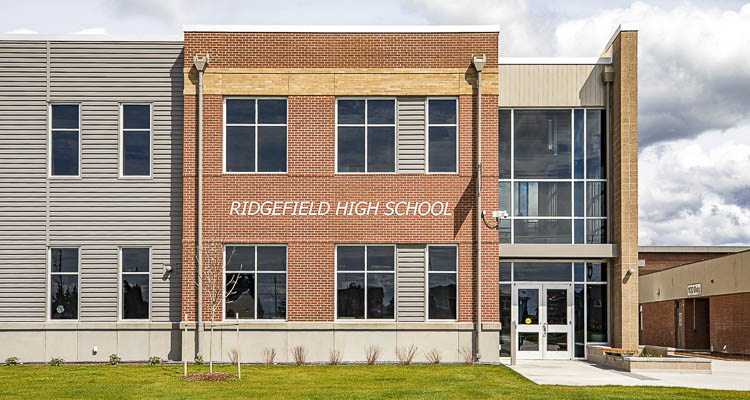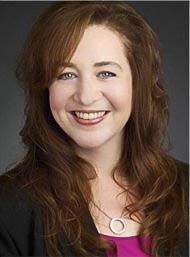
Ridgefield resident Heidi Pozzo adds ‘the rest of the story’ not covered by a newspaper’s recent endorsement of Ridgefield School District bond
Heidi Pozzo
for Clark County Today
As citizens, we look to our institutions to perform roles that support a flourishing society. Media as an institution has a dual role: holding power to account and providing citizens with information to make informed decisions.

That’s why I was disappointed with The Columbian’s decision to issue an opinion in support of Ridgefield’s bond proposals timed to coincide with ballots being mailed. Their rationale was that enrollment has increased by 47 percent and 1/3 of students are in portable classrooms. With rapid growth, more schools are necessary to educate the next generation. And the best argument against the proposal is higher taxes, but higher taxes are sometimes necessary to support a thriving community.
But that’s not the full story.
So, I reached out to share what I’ve learned and believe is necessary for voters to understand when making a decision. What did I hear? Crickets.
Following is largely the case I made and would hope all citizens would have access to prior to voting:
As journalists, I would have hoped you would have looked more closely at the issue before coming to a position intent on influencing voters.
Here’s where we agree: we need an educated populace to support a flourishing society. Schools are central to providing an education. How we provide them is where we diverge.
RSD did not initially provide any capacity numbers as part of its ask for $212.5 million, of which $190 million will come from taxpayers, should the measure pass. If the point is to build more schools, RSD should state how many seats it is short and how many will be added by these bonds.
As it turns out, there are 3,939 students per OSPI going to the brick and mortar K-12 schools. I have not included early learning which is held at the Ridgefield Administrative and Civic Center or online students who take school online and have space at a leased facility called Wisdom Ridge. According to RSD’s 2022-2028 Capital Facility Plan, the brick and mortar K-12 schools have a permanent capacity of 3,374.
There is a deficit of 565 permanent spaces for currently enrolled students.
RSD has continued to show the misleading student growth statistics of 1,337 students even after I pointed out that they are including early learning and online learning students who do not attend the brick and mortar schools.
What matters is capacity deficits, not how many students have enrolled since the last bond.
When looking at where the capacity deficits are found, there is a need for a third elementary school. The number of students has reached a point where the common spaces are too difficult to manage.
However, the proposed school is not appropriate. It has a full size, lighted synthetic turf soccer field. It also has an upgraded gym to provide space for community youth sports, as well as expanded parking to support the extra amenities. These add cost to build and will add cost long term to maintain.
Further, using information provided by RSD advisors, the cost of constructing the school (excluding land) is around $59 to $63 million. That’s $770-$840/sq. ft. OSPI’s most recent survey of construction costs is $510-$633/sq. ft. depending on the construction approach used. RSD is also utilizing a higher sq. ft. per student than OSPI recommends at 125 sq. ft./student vs. 90 sq. ft/student.
Additionally, the placement of the soccer field precludes expansion should RSD need additional capacity in the future. This has been a recurring theme at RSD. The existing 5-8 school was supposed to have a capacity of 1,200 with the ability to expand to 1,500. Its current capacity is 1,157. And through a swap of land with the city of Ridgefield with priority placement of the land to the sports complex, the school was placed between two wetlands which precluded expansion as originally envisioned in the 2015 CFAC.
The high school expansion is centered around a metals lab. Of the 10 classrooms, one is designated for the metals class. The other nine have been described as both space for future CTE and as general education classrooms. RSD has not stated how much capacity this expansion will add, nor how the space will be used.
The high school is currently the fastest growing school and is the next most in need of space. However, the request is so light on details, it is unclear to tell if the space will be designated for additional CTE programming, which will result in additional cost to run, or how much general education class space it will fill.
Exposure to varying career paths is a good thing. However, RSD is a small school district and should not be expanding such programs so dramatically on its own. Rather, it should be seeking to partner with Clark College and looking to expand Cascadia Tech with other schools in the region.
It appears RSD is rebuilding the high school one building at a time. However, that plan has not been shared with the community and it should be. The community should know the next steps and how much that will cost. It should also know the plans for CTE and how much they will cost in both buildings and programming. These details have not been shared.
In terms of the 5-8 school, it is too soon. The current 5-8 school is 96 students beyond its current capacity of 1,157 students. Upon my email request, RSD indicated that the new school would have capacity of 1,000 students. At the current growth rate, it will take 36 years to reach capacity. An intermediate solution is needed so as to not run the risk of overbuilding.
The current capacity deficit is 565.
Per RSD to me via email, the elementary school will add 600, the 5-8 will add 1,000. There was no capacity given for the high school. Assuming 9 classrooms at 25 students, that would be 225. Taken together, new capacity added would be 1,825.
A need of 565 seats vs. capacity addition of 1,825.
It’s not just me highlighting the current capacity issue. The state match is significantly smaller than the last bond, which was half this size. The lack of more state matching funds is a strong indication that RSD is building way beyond current needs.
Caution is warranted because the enrollment trends appear to be shifting. That would not be a surprise given the rapid increase in home pricing. As home prices increase, fewer younger people are able to afford them. And that means fewer younger children entering school.
The data looks to be pointing toward more expansion at the high school and not building the 5-8 now.
Washington regulations, RCW 36.70A.070(3), state that public entities must develop a capital facility plan that includes at least a six year plan of proposed locations and capacities of expanded or new facilities and how they will be financed.
That information was not included in the 2015 or the 2022 Capital Facility Plans. Voters are being asked to vote for a large increase in taxes that may not be going to places of the most need, and without knowing additional plans which RSD is required to develop and make public, but has not.
There is a need to replace roofs, address safety issues associated with the playgrounds, etc. Those costs should be coming from funds provided through regular operations.
There’s a view that 1/3 of students are currently taught in portables. There are currently 3,939 students enrolled in the brick and mortar K-12 schools. Early learning is excluded because they have their own space at the RACC and online learning is online and at Wisdom Ridge.
One third of the 3,939 students enrolled is 1,313. Using the view that one third of students are in modular classrooms, that would mean 1,313 students in modular classrooms and 2,626 students are in permanent classrooms.
Ridgefield School District lists current permanent capacity as 3,374. Somehow 748 seats have vaporized if 1,313 students are actually in modular classrooms.
The claim that 1/3 of students are in portables should draw scrutiny. Has RSD bargained away that much space as part of class size negotiations? Are modular classrooms used for other purposes? Has RSD re-purposed class space into something else?
If taxpayers are being asked to increase their taxes by $816 on the average home in the school district, there should be accountability for how space is being used.
There is a way to substantially reduce the cost to taxpayers by removing non-K-12 amenities, looking at what is driving the cost so far beyond the average in the state, and making targeted capacity increases.
Furthermore, the State recently changed its funding level for matching funds. That increase should mean an additional $3-5 million in state match. Those funds should be used to lower the cost, not for additional projects.
My comments are not new. I’ve shared them in several public forums and can point you to them should you wish.
That you have not presented the full perspective to readers in your opinion means you were unaware of these facts and perspectives or you chose to withhold them. Either way is a problem. If you were unaware, you have not fulfilled your role in journalism as presenting facts so people can make informed decisions. If you were aware and chose to withhold them, that is an attempt to mislead.
Our society will only function properly when each institution fulfills its role. I do not believe you have presented a full and fair appraisal of the situation for voters to make an informed decision.
Heidi Pozzo has been a Ridgefield resident for 16 years. She is a concerned citizen who would like students to get a good education and thinks we can do it in a more cost-effective way.
Also read:
- Opinion: The rent is overdue but it’s not just a renter problem, homeowners are struggling tooMark Harmsworth believes the solution to housing affordability is to increase supply through a reduction in unnecessary regulations and not passing restrictive ‘feel good’ policies that will have negative long-term consequences.
- Opinion: ‘Predators and progressives’Nancy Churchill attempts to answer why progressives protect predators
- Letter: ‘Nice to have a trustworthy publication’Brad Andersen suggests that “allowing some of the stories to play out a little more slowly may help return some old fashioned integrity in the newsmakers.’’
- Opinion: As more states enact learning choice programs that benefit children, nearly one million families have applied to participateLiv Finne of the Washington Policy Center reports that an exciting opportunity has emerged from the damage inflicted on students from the extended COVID public school shutdowns and school curriculum controversies.
- Opinion: Can we actually stop some dangerous driving?Doug Dahl, the Target Zero manager and communications lead, has a question for Washington drivers.










